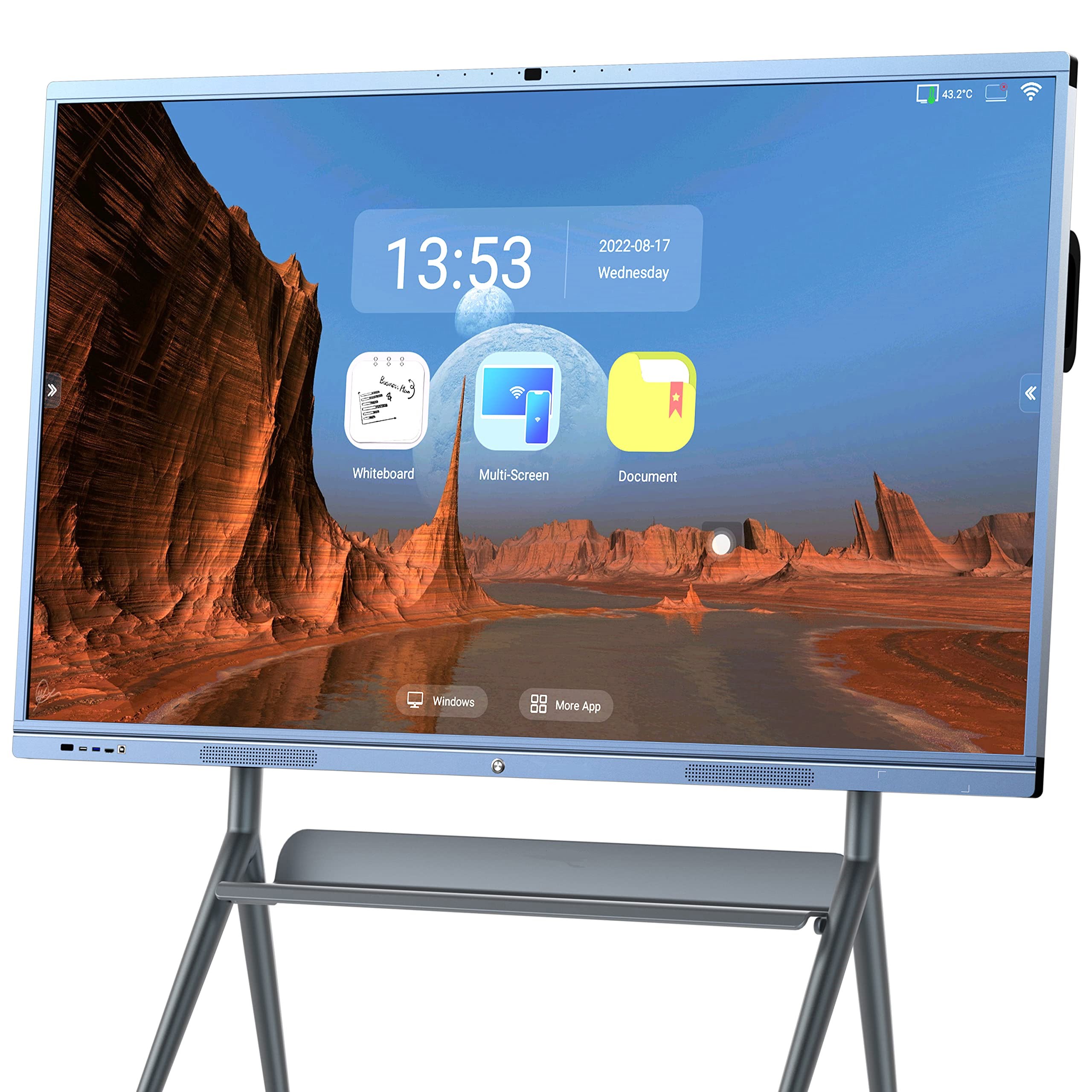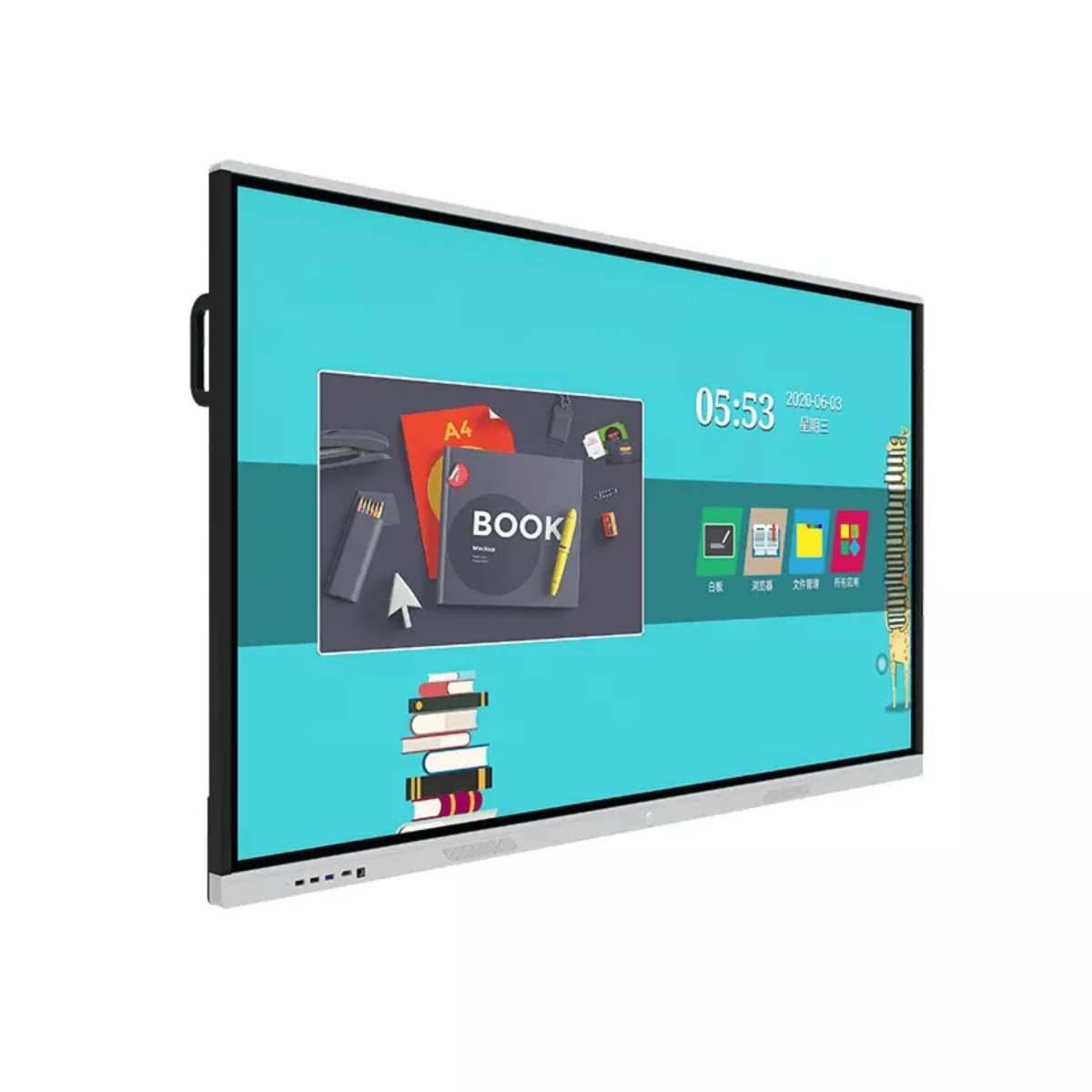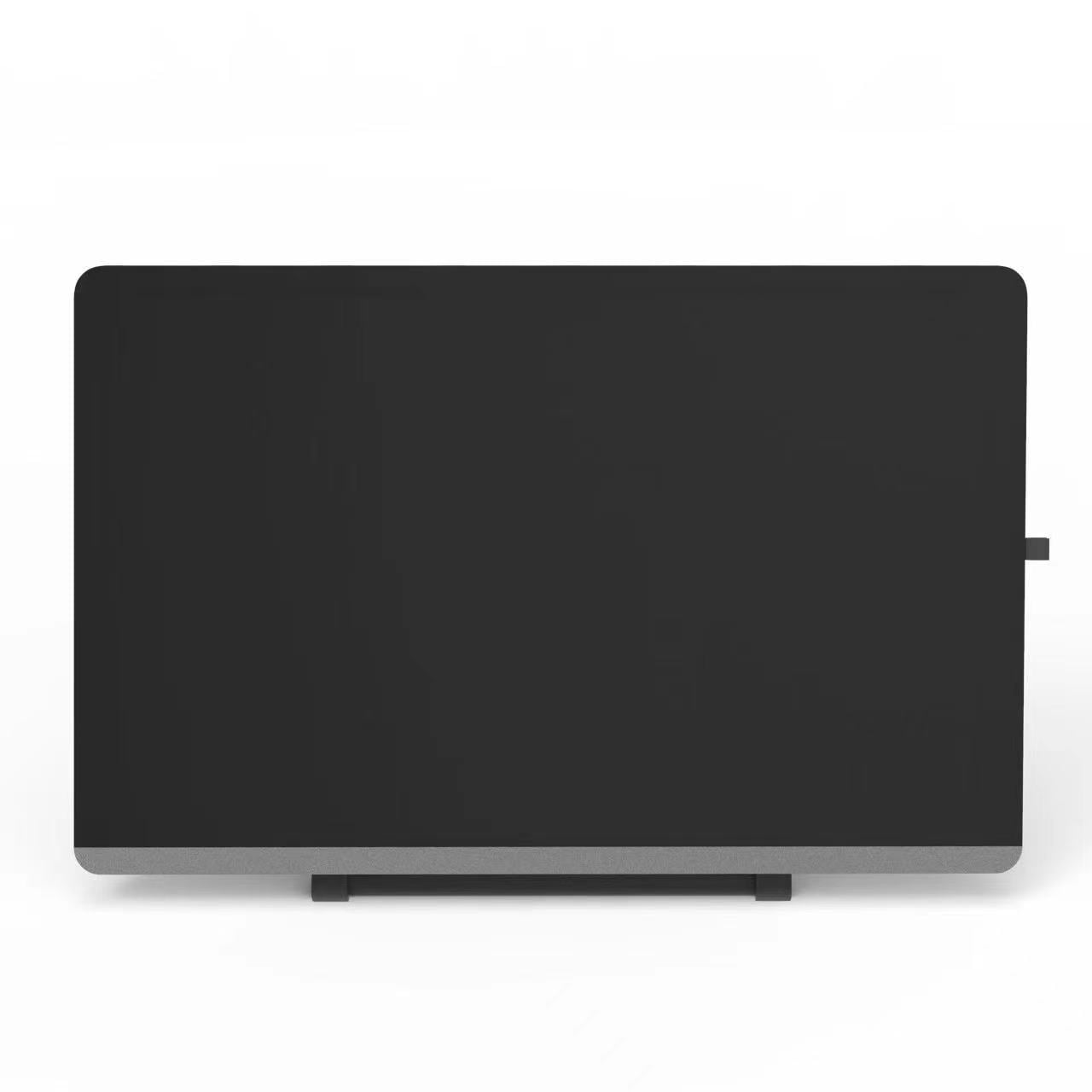Interactive flat panels (IFPs) are large display screens that combine the features of a touch-enabled display with a computer or multimedia system, allowing users to interact with the content directly on the screen. They are often used in educational institutions, corporate settings, and other environments that require collaborative and interactive presentations.
Here are some key points to cover in an introduction to interactive flat panels:
- Definition and Overview: Begin by defining what interactive flat panels are. Explain that they are flat, touch-enabled screens that can display multimedia content, such as text, images, videos, and interactive applications.
- Display Size and Resolution: Discuss the typical size range of interactive flat panels, which can vary from around 55 inches to over 100 inches diagonally. Also, mention that they come in different resolutions, including Full HD (1920×1080) and 4K Ultra HD (3840×2160), providing sharp and vibrant visuals.
- Touch Technology: Explain the touch technology used in interactive flat panels, such as capacitive or infrared touch. Capacitive touch panels use the electrical properties of the human body to detect touch, while infrared touch panels utilize infrared sensors to detect touch points.
- Interactive Features: Highlight the interactive features of IFPs, such as multi-touch capabilities, allowing multiple users to interact with the screen simultaneously. Discuss other features like gesture recognition, palm rejection, and pen/stylus support, which enable users to write, draw, and manipulate content on the screen.
- Connectivity and Integration: Explain how interactive flat panels can be connected to computers, laptops, or other devices using HDMI, USB, or wireless connectivity options. Discuss the integration of operating systems and software applications that facilitate content creation, collaboration, and sharing.
- Classroom and Educational Use: Emphasize the benefits of interactive flat panels in educational settings. Discuss how they facilitate interactive teaching methods, encourage student engagement, and enable collaborative learning experiences. Mention the integration of educational software, interactive quizzes, and online resources that enhance the learning process.
- Business and Collaboration Use: Explain how interactive flat panels are used in corporate environments for presentations, meetings, and brainstorming sessions. Discuss the integration of video conferencing systems, whiteboarding applications, and file-sharing capabilities that promote collaboration and productivity.
- Accessibility and Inclusivity: Discuss how interactive flat panels can benefit individuals with disabilities, such as those with visual impairments or motor skill limitations. Explain features like screen magnification, voice control, and tactile feedback that enhance accessibility and inclusivity.
- Future Developments: Briefly mention any emerging trends or advancements in interactive flat panel technology, such as the integration of artificial intelligence, augmented reality, or virtual reality for enhanced interactive experiences.
By providing an in-depth introduction to interactive flat panels, you can give your audience a solid understanding of the technology and its potential applications in various fields.



